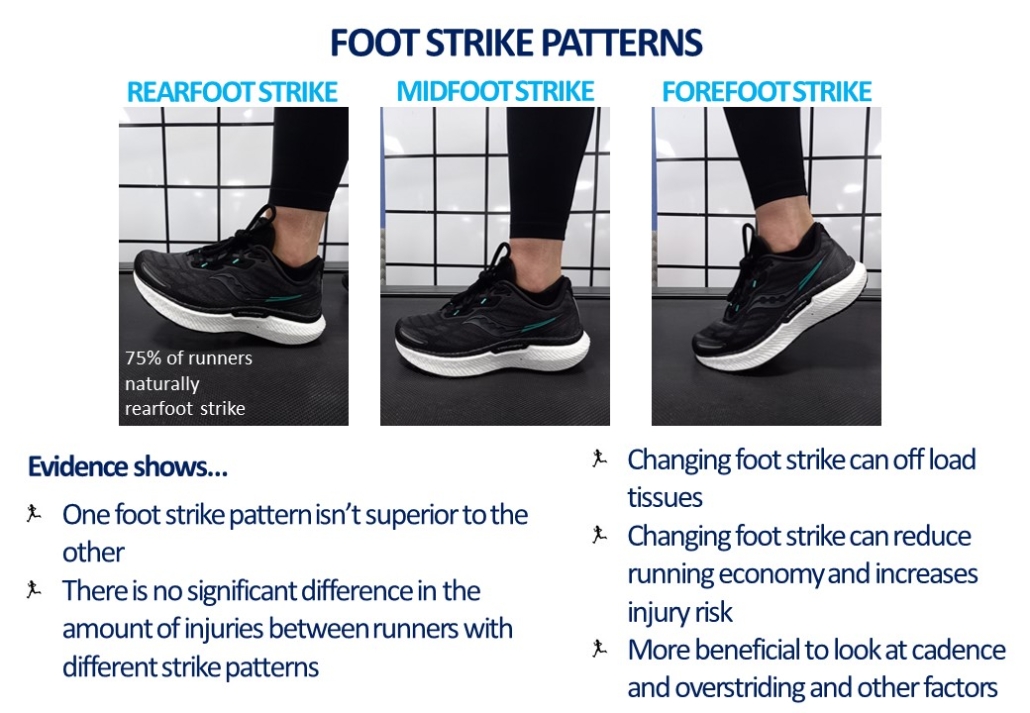Foot placement… A right or wrong way?
When it comes to running, foot placement is one of the key factors – after all, your foot is your sole point of contact with the ground, with the arch working as a shock absorber and your foot then transferring force generated through to the ground, propelling you forward.
In general there are three foot strike patterns – Forefoot, Midfoot and Rearfoot.
Evidence shows that no one foot strike pattern is more superior to another. Forefoot strike is most seen in sprinting, in part due to the shoe type, particularly when using track spikes. Rearfoot strike is the most common pattern however, with 75% of runners impacting the ground first with their heel, especially as running distances increase.
What about pronation?
A common term heard when looking at foot placement during running is pronation. Pronation is the term used for the inward roll that occurs in the foot at the point of contact on the ground. This is a natural movement and allows you to absorb the shock. Whilst pronation is a natural and important biomechanical function, too much can lead to lead to injuries, particularly around the knee.
Does stride length matter?
When the foot lands excessively in front of the centre of body mass (in front of the pelvis), we refer to this as ‘overstriding’.
As a result of overstriding, additional stress can be put on other joints such as excessive knee extension, along with a lack of hip flexion and sometimes dorsiflexed ankle. When the stride length becomes too long, the leg is landing too far out in front of you, often heel first with a rearfoot strike, which acts as a break, slowing your running down.
Overstriding commonly occurs when a runner has a slower cadence, resulting in a greater length of time where the foot is in contact with the ground. There is a range of different cues that can be used to aid the re-education of stride pattern.
Evidence shows that no one foot strike pattern is more superior to another.
Interested in finding about more about how you run? Why not book a run analysis?
75% of runners impact the ground first with their heel



